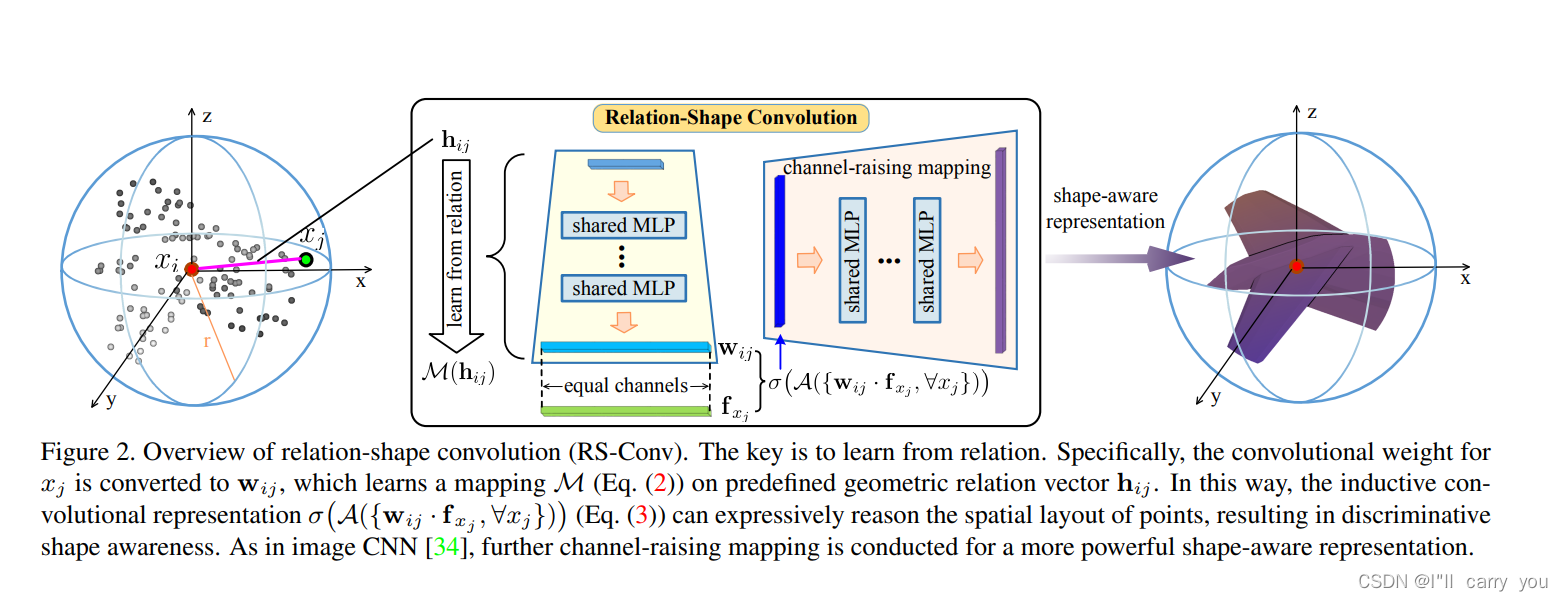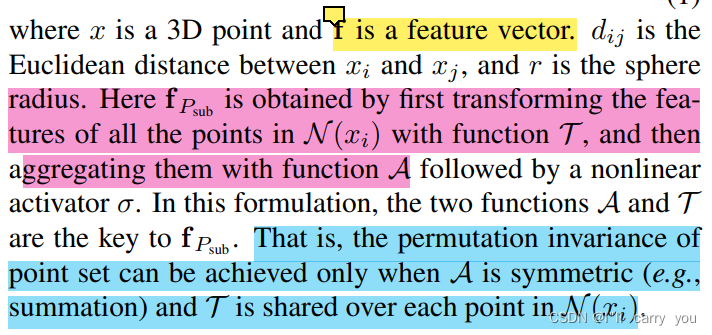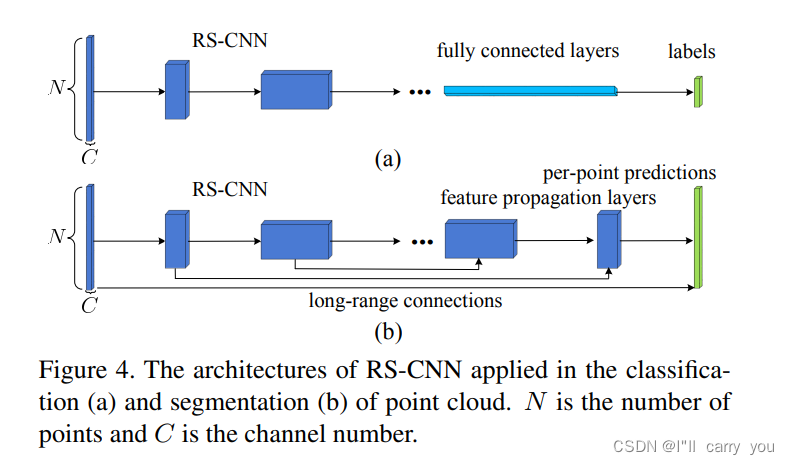[CVPR 2019] RS-CNN:Relation-Shape Convolutional Neural Network for Point Cloud Analysis. [pytorch] [cls. seg. oth.] 🔥
1、四个问题
- 要解决什么问题?
- 点云中潜在的局部形状难捕捉。
- 用了什么方法解决?
- 提出了一个卷积算子,称为:relation-shape convolution,能够显式编码点的几何关系,因此具有形状感知和鲁棒性(对刚体变换如旋转和平移)。
- 在此基础上提出了RS-CNN网络,将2D CNN扩展到 点云上。
- 效果如何?
- 在3个任务上取得 state of the arts(Shape classification, Shape part segmentation, Normal estimation)
- 还存在什么问题?
- ?
2、 论文概述
2.1、 Relation-Shape Convolution

一个通用的卷积算子可以表示为:
其中的参数解释:x是3D点,f是特征向量,dij是欧式距离,T用来提取局部点的特征,A是聚合函数,A和T共同保证点云的置换不变性

具体在RS-Conv来说, T又可表示如下:

hij是根据先验知识定义的,抽取低层次的特征(文章后面也探讨了h不同选取有什么影响),M是MLP,抽取高层次的特征(MLP能够拟合任意连续函数)
For geometric priors, one can use 3D Euclidean distance as an intuitive description of low-level relation hij
The goal of mapping M is to abstract high-level relation expression between two points, which can encode their spatial layout. Here we implementMwith a shared multi-layer perceptron (MLP) due to its powerful mapping ability
最终的公式为:

这样就能对空间特征进行显式建模,有形状感知能力?
this convolutional representation, with all the relation between xi and N (xi) aggregated, can achieve explicit reasoning about the spatial layout of points, thus resulting in discriminative shape awareness.
Channel-raising mapping:
仿照CNN通道维数变高,使用MLP对 f P s u b f_{P_{sub}} fPsub??进行升维。
2.2、 RS-CNN

3、 参考资料
论文原文:http://export.arxiv.org/pdf/1904.07601